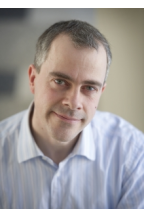James Taylor

Biography
Dr. Taylor is using whatever tools he can, including numerical simulations, astrophysical theory and observational data, to try to figure what dark matter is, where it is, and how it behaves. His research includes gravitational lensing and dynamical studies of galaxy clusters, the properties of the smallest galaxies in the local universe, and the theory behind dark matter halos around galaxies and clusters.
Research Interests
Dark matter
Cosmological structure formation
Galaxy formation
Galaxy dynamics
Galaxy clusters
Massive black holes
Cosmology
Computational & theoretical astrophysics
Astrophysics and Gravitation
Scholarly Research
Industrial Research
member, International Astronomical Union, member, Canadian Astronomical Society, member, American Astronomical Society
Education
2001 Ph. D. (Astronomy), University of Victoria, Canada
1994 M. Sc. (Astronomy), University of Toronto, Canada
1993 B. Sc. (Mathematics & Physics), University of Toronto, Canada
Awards
2009–2014: NSERC Discovery Grant
2006–2009: NSERC Discovery Grant
2006–2007: Co-Investigator, Hubble Space Telescope Cycle 15 Snapshot Proposal #10881 (143 orbits)
Professional Associations
Member, International Astronomical Union
Member, Canadian Astronomical Society
Member, American Astronomical Society
Affiliations and Volunteer Work
Waterloo Centre for Astrophysics
Affiliate, Perimeter Institute for Theoretical Physics
Teaching*
- PHYS 236 - Computational Physics 1
- Taught in 2020, 2021
- PHYS 249 - Computational Physics and Linear Algebra
- Taught in 2022, 2023
- PHYS 364 - Mathematical Physics 1
- Taught in 2020, 2021, 2024
- PHYS 781 - Fundamentals of Astrophysics
- Taught in 2023, 2025
- PHYS 787 - Cosmology
- Taught in 2023, 2025
* Only courses taught in the past 5 years are displayed.
Selected/Recent Publications
What Do Dark Matter Halo Properties Tell Us about Their Mass Assembly Histories? Wong, Anson W.C., Taylor, James E. 2012 ApJ 757, 102
The Next Generation Virgo Cluster Survey (NGVS). I. Introduction to the Survey, Ferrarese et al. 2012 ApJS, 200, 4
COSMOS: Stochastic Bias from Measurements of Weak Lensing and Galaxy Clustering, Jullo, E., Rhodes, J., Kiessling, A., Taylor, J. E., Massey, R., Berge, J., Schimd, C., Kneib, J.-P., Scoville, N. 2012 ApJ 750, 37
Measuring the Geometry of the Universe from Weak Gravitational Lensing behind Galaxy Groups in the HST COSMOS Survey Taylor, J. E., Massey, R. J., Leauthaud, A., George, M. R., Rhodes, J., Kitching, T. D., Capak, P., Ellis, R., Finoguenov, A., Ilbert, O., Jullo, E., Kneib, J.-P., Koekemoer, A. M., Scoville, N., Tanaka, M., 2012 ApJ 749, 127
New constraints on the evolution of the stellar-to-dark matter connection: a combined analysis of galaxy-galaxy lensing, clustering, and stellar mass functions from z=0.2 to z=1 Leauthaud, A., Tinker, J., Bundy, K., Behroozi, P. S., Massey, R., Rhodes, J., George, M. R., Kneib, J.-P., Benson, A., Wechsler, R. H., Busha, M. T., Capak, P., Cortes, M., Ilbert, O., Koekemoer, A. M., Le Fevre, O., Lilly, S., McCracken, H. J., Salvato, M., Schrabback, T., Scoville, N., Smith, T., Taylor, J. E., ApJ in press (preprint arXiv:1104.0928)
The GALEX Ultraviolet Virgo Cluster Survey (GUViCS). I: The UV luminosity function of the central 12 square degrees A. Boselli et al. 2011 A&A 528, 107
Please see Dr. Taylor's website for a complete list of his publications.